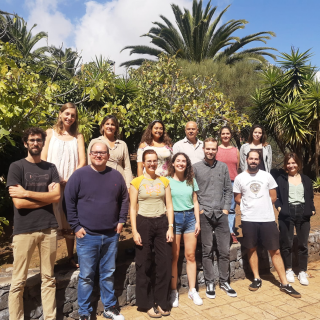Bibcode
Avirett-Mackenzie, M. S.; Villforth, C.; Huertas-Company, M.; Wuyts, S.; Alexander, D. M.; Bonoli, S.; Lapi, A.; Lopez, I. E.; Ramos Almeida, C.; Shankar, F.
Bibliographical reference
Monthly Notices of the Royal Astronomical Society
Advertised on:
3
2024
Citations
1
Refereed citations
1
Description
Supermassive black holes require a reservoir of cold gas at the centre of their host galaxy in order to accrete and shine as active galactic nuclei (AGN). Major mergers have the ability to drive gas rapidly inwards, but observations trying to link mergers with AGN have found mixed results due to the difficulty of consistently identifying galaxy mergers in surveys. This study applies deep learning to this problem, using convolutional neural networks trained to identify simulated post-merger galaxies from survey-realistic imaging. This provides a fast and repeatable alternative to human visual inspection. Using this tool, we examine a sample of ~8500 Seyfert 2 galaxies ($L[\mathrm{O\, {\small III}}] \sim 10^{38.5 - 42}$ erg s-1) at z < 0.3 in the Sloan Digital Sky Survey and find a merger fraction of $2.19_{-0.17}^{+0.21}$ per cent compared with inactive control galaxies, in which we find a merger fraction of $2.96_{-0.20}^{+0.26}$ per cent, indicating an overall lack of mergers among AGN hosts compared with controls. However, matching the controls to the AGN hosts in stellar mass and star formation rate reveals that AGN hosts in the star-forming blue cloud exhibit a ~2 × merger enhancement over controls, while those in the quiescent red sequence have significantly lower relative merger fractions, leading to the observed overall deficit due to the differing M*-SFR distributions. We conclude that while mergers are not the dominant trigger of all low-luminosity, obscured AGN activity in the nearby Universe, they are more important to AGN fuelling in galaxies with higher cold gas mass fractions as traced through star formation.
Related projects
![Teacup in [O III] and CO(2-1) Supermassive black holes modify the distribution of molecular gas in the central regions of galaxies. Credit: HST and C. Ramos Almeida.](/sites/default/files/styles/crop_square_2_2_to_320px/public/images/project/teacup_english.001.jpeg?itok=dF4bDw-q)
Nuclear Activity in Galaxies: a 3D Perspective from the Nucleus to the Outskirts
This project consists of two main research lines. First, the study of quasar-driven outflows in luminous and nearby obscured active galactic nuclei (AGN) and the impact that they have on their massive host galaxies (AGN feedback). To do so, we have obtained Gran Telescopio CANARIAS (GTC) infrared and optical observations with the instruments
Cristina
Ramos Almeida

Traces of Galaxy Formation: Stellar populations, Dynamics and Morphology
We are a large, diverse, and very active research group aiming to provide a comprehensive picture for the formation of galaxies in the Universe. Rooted in detailed stellar population analysis, we are constantly exploring and developing new tools and ideas to understand how galaxies came to be what we now observe.
Ignacio
Martín Navarro